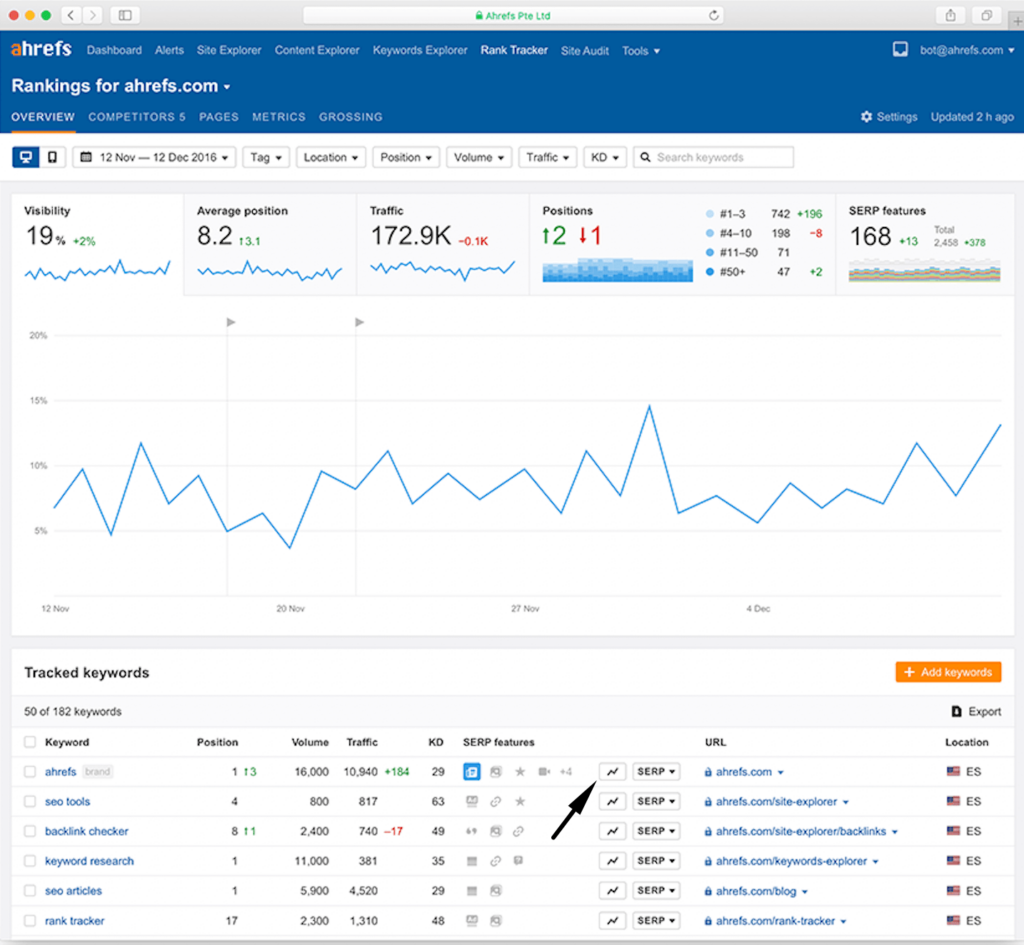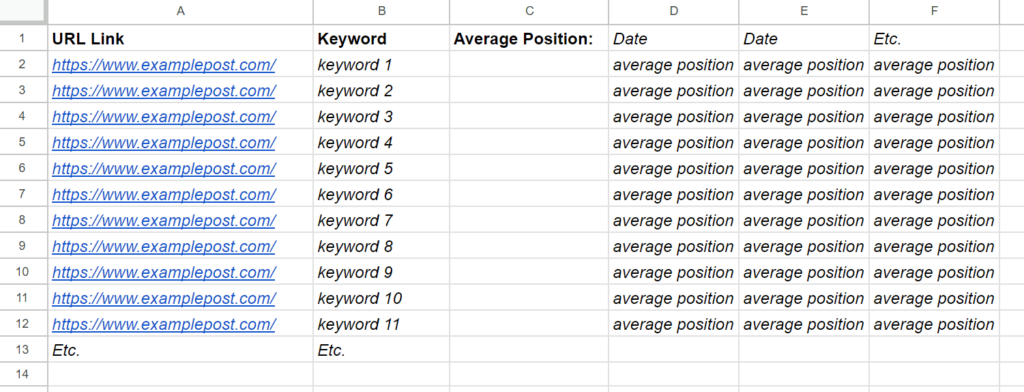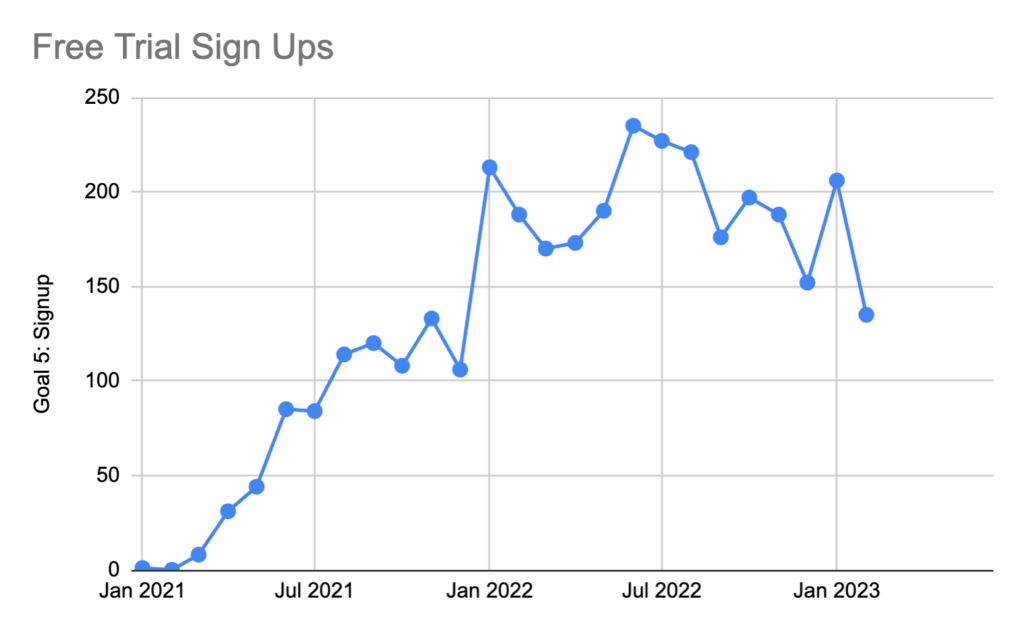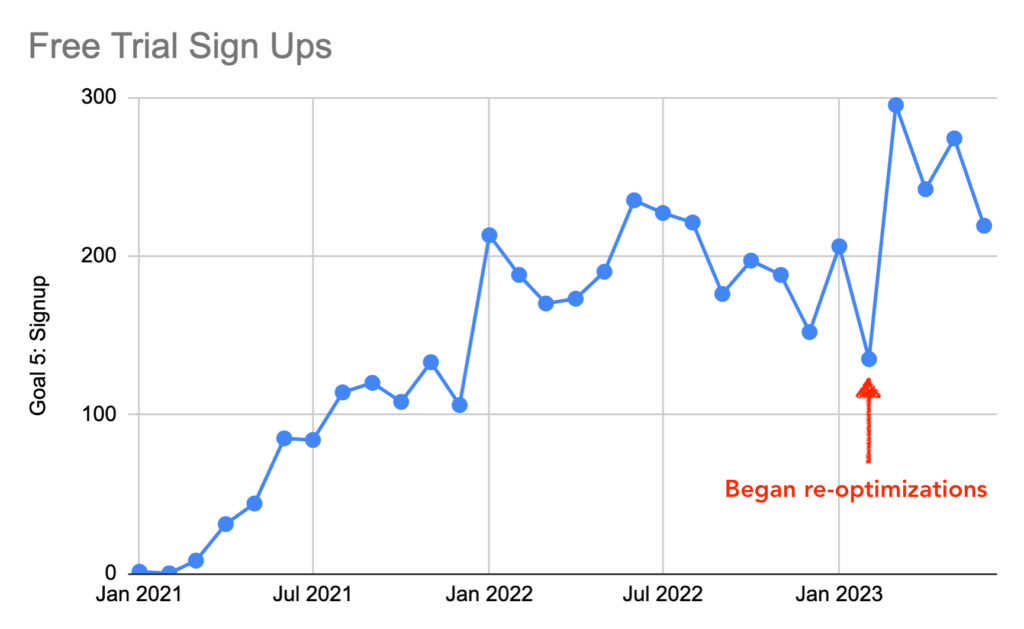There are three main buckets when it comes to updating website content:
1. Updates to ensure accuracy when talking about your brand, products, or services — we’ll call these “brand-accuracy” updates. If you update or add new products or services, or go through a significant rebrand, you’ll have to update your website content to reflect those changes. But obviously, there is no “how often to do this?” question here because it’s self-explanatory. If you update a product feature, you should immediately update that product page (and any other content about that particular functionality).
2. Updates to general marketing site copy (e.g., your home page, About Us page, resource pages, product or feature pages). Our rule of thumb here is: if it’s not broken, don’t fix it. These don’t require updates if they’re accurate and accomplish the goals you set for them. Which leads us to our next point…
3. Key SEO-based pages (i.e., the vast majority of this is long-form blog content, though many brands optimize and track conversions from their home page, too) — and this is what most digital marketers are curious about during our conversations about updating website content. But there is no magic number here.
The intention behind creating SEO content is to rank highly in search engines and drive organic traffic (and, in most cases, see conversions from content). So, considering the goals of SEO content — updates should not revolve around some arbitrary schedule — the trigger should be slipping/stalled rankings.
The best way to stay on top of content updates is to monitor search engine rankings. If you notice rankings decline or stagnate, then an update is warranted. If not, you don’t have to update for the sake of updating.
We do this for a living (publish new content to get SEO rankings and keep old content updated to maintain rankings). So, we put together this guide to share our process for updating SEO-driven content. In it, we explain:
- The best ways to monitor content and schedule updates (including the tools we use)
- Setting the right expectations for updates — the importance of updates and what to expect after making changes
How to Monitor Content & Schedule Strategic Updates
To monitor rankings, we recommend a tool like Ahrefs or Google Search Console (this is not as ideal, but it’s free, and if you don’t have a high volume of keywords to track, it can work for a period).
- Ahrefs has a tool called Rank Tracker, where you can plug in the keywords on your content plan and see the pages that rank for them, with the most current rank position. Ahrefs will even show you how rankings improve or decline and provide a dropdown where you can review the entire rank history.

- Google Search Console shows a list of all your ranking pages, the keywords they rank for, and the average position. You can add all of the keywords to a spreadsheet, with the page URL, and update the sheet every week or so to catch when the average position changes. Again, this is a more time-consuming process, but it can work for smaller teams or teams that don’t want to shell out on SEO software just yet.

Here are the best practices to keep in mind during content monitoring:
- As we said above, you don’t need to update content until you notice rankings slip or stagnate.
- If you were seeing steady movement up page one, but rankings start to stall (e.g., isn’t pushing past position #5), then updating content could be one method to keep climbing the rankings, or you may need to employ other tactics like link building to achieve higher rankings. We’ll explain what to look for to determine if updating could build some momentum.
- If you notice rankings or traffic start to decline (not just in one week, but over the course of many weeks or months), it’s a clear indicator that content does not match search intent and needs an update. Backlink strength may also be a factor here, but if there’s a steady decline in rankings, our experience would tell us an update is required to align with search intent.
So, we’ll stress again: there is no magical timing for updating website content. The most efficient approach is to monitor its performance and take action when you notice a problem.
Mini Case Study: Auditing Website Rankings Helps You Identify Which Pages Are Due for Updates
During a rankings audit for a particular SaaS client, we noticed our post for an industry-specific keyword related to “estimating software” started to decline in rankings. It had been moving up to page one, plateaued around the bottom (positions #9 and #10), then began to dip. So we see here a combination of stalled and slipping rankings.

We performed SERP analysis to see if the content still matched the search intent of the target keyword (explained below) and found the results on page one had actually changed since we first wrote the post.
Google was now primarily ranking list posts comparing different software options. But our post didn’t have a list. It didn’t compare multiple options. It only talked about the client’s product. At the time we wrote it, that was fine — a single landing page for one product was part of the search intent. But that changed over time. So, the drop in rankings was understandable.
We reworked the piece to include a list of competing software so readers could review and compare top options (while also learning about our client’s solution). Then, we changed the title to reflect the updates and show readers we cover all the most popular solutions.
After the updates, we saw the post not only recover, but steadily move up page one to position #1 (image above, blue line is the ranking position, higher on the page). Since hitting the top of page one, we’ve seen some fluctuation, but the post never dips past position #3 and remains, most of the time, at #1. So we do not need to update it again until rankings fall.
Bonus: Use Content Optimization Software to Monitor SEO Scores
Another note for our more advanced readers: content optimization software (like Clearscope) is a category of SEO software that can be really useful to create, monitor, and update content.
These tools analyze and grade content based on how well it aligns with search intent and existing rankings for a keyword. Some of these tools have a “content tracker” that monitors SEO scores; you can see if grades fall and use that as a trigger to update your content.
Tracking SEO scores can be extremely helpful because they may start to decline before rankings; by monitoring these scores, theoretically, you can “get ahead” of updates and make changes before you see a dip in performance.
Best Practices for Updating Website Content
Now that you’ve identified what content to update, the next question is how to actually update them.
1. Use Content Optimization Software to Check SEO Scores
The first thing we do is check the content’s SEO score in Clearscope. We like to aim for an A score or better on Clearscope, but if you’re using other on-page optimization software, adjust accordingly. At this step, we’ll adjust the keywords in the piece to achieve an A score.
2. Check That Content Matches the Target Audience’s Search Intent
The next thing we do is run a search for the target keyword to see if there are larger misalignments between our content vs. what Google is favoring and ranking. This is a critical step (arguably the most critical) and totally separate from checking the Clearscope score.
We wrote more about our SERP and search intent analysis process here, but in short we check to see if our content matches what Google is already ranking in terms of:
- Format — Is Google favoring blog posts, landing pages, lists, narratives, etc.
- Topics — What topics and subtopics do most of the highest ranking pieces tend to cover? That’s an indication that Google feels those topics are important to this keyword.
In this step we look at the content with fresh eyes and see if it still matches search intent (presumably, it did when we first wrote it, but if you’re evaluating content that was written without this kind of search intent matching in mind, it may never have matched search intent — it could be way off).
Also, some common sense and critical thinking is important here. Beyond finding patterns in what is already ranking you can also think back to your original strategy and consider how SERP results have changed since you initially wrote content. What’s relevant now that wasn’t before?
For example, new products, competitors, or technologies can pop up within your realm, and if your content isn’t up-to-date with the most current solutions, it could be noticeably out of date or not fulfilling search intent. For example, if you have posts ranking for tech trends from pre-2023, there’s a good chance they don’t mention the rise of AI and ChatGPT, which probably makes them incomplete now. That’s a major example but minor examples like this exist in any space.
Mini Case Study: Updating Content Relevancy Improves Rankings
In addition, societal changes can impact SERP results and search intent. For example, take the keyword “time tracking software” — this is an opportunity we looked at for a client a while back.
- At the time (pre-COVID and remote work), the SERP was specific to time clock software for businesses to track employee hours.
- If you look at the SERP for this keyword today, the results now talk about two types of software solutions: time clock software for businesses and time tracking software for individuals to monitor remote work.
Since more people are working from home, there is an increased interest in solutions to track working hours.
So the search intent isn’t entirely different — there are still Googlers doing that search with the intent of finding traditional time clock software — but there is another audience to consider now. Another fraction of these Googlers are looking for apps to track remote work.
So we have to update content so it’s helpful for both audiences: instead of keeping the post specific to one type of solution, it’s more competitive to create a review guide explaining the two types of time tracking apps.
Then, you can review software in both categories, sell your product to the right portion of Googlers, and help each reader find their best solution.
Performing SERP analysis helps you determine the high-level ideas for content and where to start making changes.
3. Double-Check That the Details in Content Are Up-to-Date and Accurate
As a final step, make sure these details are polished:
- Stats, examples, and quotes are up to date.
- There are no broken links.
- Update SEO titles and meta descriptions for accuracy and relevance (e.g., update the year to the current year if it’s in your title).
Bonus: Display “Last Updated Date” on Article Pages
A final tip: you can also try adding the “Last Updated” date alongside the original publishing date in the article schema. Including both dates can help Google “catch” updates more easily, and it shows readers your content is current. You can make these changes within your content management system.
In our experience, we’ve seen that displaying the “Last Updated” date can encourage an immediate boost in keyword rankings for older pages you’ve recently updated.
What to Expect from Updates
It could take a few weeks or a month for updates to make a significant impact (i.e., you see rankings recover or even improve), and you’ll likely see volatility in rankings for a period; this just means your post may jump around a bit as Google finds a new home for it. The movement will eventually settle down, and you’ll see the content’s new rank.
You should also know that not all updates make a difference. It’s not guaranteed that just because you update a page, rankings will move up at all. In those cases, content may require more comprehensive detail, better-quality links, or more relevant media to reclaim its position; or perhaps you’re just targeting a really hard keyword and not pushing hard enough on the promotional side.
Our Results from Client Content
Before wrapping up, let’s talk about how updating content proved beneficial for another one of our clients.
This particular client of ours was seeing 200+ trial sign-ups per month from our content, but around the end of 2022, we noticed conversions started dropping off. Since conversions are our primary metric of success, this is what we noticed first, then we dug into rankings and website traffic to identify the cause of the dip.

During our research, we realized some of our posts had lost rankings for primary (and secondary) keywords — so content wasn’t being found or viewed as often, and fewer visitors meant fewer conversions.
We performed SERP analysis for the primary (and valuable secondary) keywords we’d lost rankings for and we saw that many SERPs had changed. So, we brainstormed ways to re-angle content to better align with search intent.
Some content only needed light changes (e.g., adding new product features or competitor information) while other posts required heavier remixes (e.g., turning a product feature article into a list post mentioning several products, as described in examples above)
After we completed updates to all posts on our queue, rankings recovered and trial sign-ups ended up at an all-time high.
Prior to updates, content was averaging 171 conversions per month. After updates, our content averages 258 conversions per month.

You can read more about this project and using secondary keywords to your advantage here: How to Find and Use Secondary Keywords to Increase Conversions: A Case Study
The Sparknotes
There is no golden rule when it comes to updating website content — you can’t say “content requires regular updates every month or year” because it’s just not that simple. Despite what other blog posts on this topic may suggest.
Timing website updates and choosing which posts to prioritize is highly dependent on your content marketing strategy, the piece of content, the keyword(s) you’re targeting, site performance and domain authority, promotional efforts, business goals — the whole gamut.
The best way to maintain content is to monitor rankings and troubleshoot when you notice numbers stall or slip. If content is performing well for you, there’s no obligation to update it because X amount of time has passed. If it’s not broken, don’t touch it.
Once you identify what needs attention, you can begin slotting updates and determining your strategies to revamp content.
Want to Work with Us or Learn More about How We Approach Content Marketing?
- Our Agency: If you want to hire us to execute content marketing in this way, you can learn more about our service and pricing here.
- Write For Us: If you’re a content marketer or writer and would love to do content marketing this way, we’d love to have you apply to join our team.
- Our Content Marketing Course: Individuals looking to learn our agency’s content strategy and become better marketers, consultants, or business owners can join our private course, taught via case studies, and presented in both written and video content formats. We include several details and examples not found on this blog. Our course is also built into a community, so people ask questions, start discussions, and share their work in the lesson pages themselves, and we, along with other members, give feedback.








